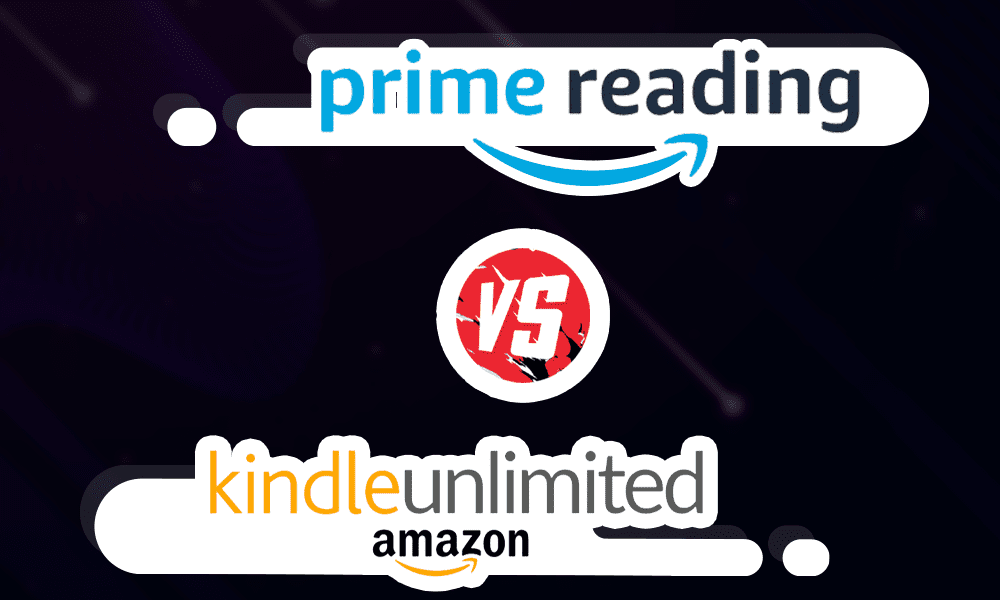Prime Reading vs Kindle Unlimited: Which Is Better in 2022?
Are you curious about Amazon’s two e-book subscription services but not quite clear on the difference? This Kindle Unlimited vs Prime Reading comparison will tell you all you need to know.
If you’ve been looking for ways to get free books on your Kindle, then chances are that you’ve run into Kindle Unlimited and Prime Reading. Since both of these services are offered by Amazon, the obvious question becomes: What’s the difference? This Amazon Prime Reading vs Kindle Unlimited comparison will make that clear.
Key Takeaways:
- Kindle Unlimited offers a much larger selection of Kindle books than Amazon Prime Reading does.
- Every Amazon Prime member gets free access to Prime Reading, whereas a Kindle Unlimited subscription costs $9.99 per month.
- You can access both Prime Reading and Kindle Unlimited with Kindle e-readers or through the Kindle app available on most devices.
If either Kindle Unlimited or Prime Reading sounds up your alley, you might want to consider a Kindle e-reader to make the best use of your unlimited reading. Check out our Kindle model comparison to learn about all the different versions.
Most of this article will be focused on the differences between Prime Reading and Kindle Unlimited, so if you want more details, make sure to read our detailed Kindle Unlimited and Prime Reading guides.
No, Kindle Unlimited is a separate subscription service that offers access to a much larger number of titles, whereas Prime Reading has a limited selection, but a subscription is included with every Amazon Prime membership.
No, Kindle Unlimited is not included with Amazon Prime.
Yes. If you cancel your account, any books you’ve borrowed through Kindle Unlimited will disappear from your library at the end of the billing cycle. The same is also true for Prime Reading and your Amazon Prime subscription.
Prime Reading vs Kindle Unlimited Comparison
Although both programs offer unlimited access to select books, there are otherwise significant differences between the two. First, Prime Reading limits you to 10 titles at a time, while Kindle Unlimited restricts you to 20 (we have a guide on how to return a Kindle book if you reach your limit).
Additionally, Kindle Unlimited is a stand-alone subscription service that isn’t directly tied to any other Amazon service or product. Prime Reading, on the other hand, isn’t sold separately, but rather as a part of the overall Amazon Prime package that includes other things like priority shipping and access to Amazon Prime Video and Prime Music.

Besides these fundamental differences, there’s also a huge gap in how many titles are available, with the Prime Reading catalog being just a small subset of the larger selection on Kindle Unlimited.
Pricing: Prime Reading vs Kindle Unlimited
Aside from the selection, the biggest difference between the Kindle Unlimited service and Prime Reading is how you pay for them.
Amazon Prime Subscription Costs
As we mentioned, Prime Reading isn’t available on its own. Instead, you’ll have to sign up for an Amazon Prime membership, which costs $14.99 per month or $139 per year. There’s also a 30-day free trial, and Amazon offers a 50% discount to select groups like students and people receiving government assistance.

If this was the price for Prime Reading on its own, it would be a terrible deal. Luckily, an Amazon Prime subscription offers more than just the Prime Reading benefits, but that’s outside the scope of this article.
Kindle Unlimited Subscription Costs
In order to access Kindle Unlimited, you’ll need to pay $9.99 per month. There’s no yearly plan available, but Amazon frequently offers longer subscription packages – such as six, 12 or 24 months – for a discounted price on a limited-time basis.

Book Selection: Prime Reading vs Kindle Unlimited
Besides the pricing model, the biggest difference between Kindle Unlimited and Prime Reading lies in the selection of eligible titles.
Prime Reading contains roughly 3,000 Kindle e-books, digital magazines, comic books and audiobooks. Kindle Unlimited, on the other hand, boasts over 2 million titles, which results in a much broader range of content ranging from self-published titles to popular literary fiction.

That said, even Kindle Unlimited has its limits. It’s worth bearing in mind that out of the so-called “Big Five” North American publishers, only two (HarperCollins and Simon & Schuster) offer any of their titles through the service. Even then, it’s only a small selection from their catalogs, so don’t expect to see any of their recent best sellers appear on the list either.
Even so, if you’re an avid reader, there’s a good chance you’ll get some value out of Kindle Unlimited. At the time of writing, 23 of the top 50 books on the Kindle best seller lists are available through the Kindle Unlimited program. Only three were available through a Prime Reading subscription.

It’s also worth noting that while the Kindle Unlimited library keeps growing, Prime Reading books are rotated in and out over time. This means that longtime Amazon Prime users will be able to read more books than the number of available titles at any given time would imply.
Compatible Devices: Prime Reading vs Kindle Unlimited
Both Kindle Unlimited and Prime Reading can be used with most devices. Obviously both services work well with Amazon devices like a basic Kindle, Kindle Paperwhite or a Kindle Fire (read our Kindle e-reader vs Fire Tablet and Amazon tablet comparison for more), but you can also install the Kindle app on virtually any type of device.

The app is available for Windows, Mac, Android and iOS (see our guide for how to read Kindle books on PC). There are no Kindle apps for Linux or ChromeOS, but you can still use the web-based Kindle cloud reader.
Final Thoughts
That’s it for our Prime Reading vs Kindle Unlimited comparison. At the end of the day, it’s almost impossible to compare the two services, given how fundamentally different they are. Where one is entirely about books, the other is merely an added benefit of a service that offers video streaming and priority shipping.
Although access to Prime Reading titles is a nice bonus for Amazon Prime members, it’s hardly the biggest selling point of the service.
Kindle Unlimited, on the other hand, stands on its own; whether or not it’s worth it depends largely on your reading habits. If you’re just an occasional reader and not looking for a way to discover more books and authors, chances are it’s not worth the cost of admission.
What did you think of our Kindle Unlimited vs Prime Reading comparison? Do you agree with our assessment of the two services, or do you think there’s some detail we missed? Have you used either, and if so, what were your experiences? Let us know in the comments below. Thank you for reading.

